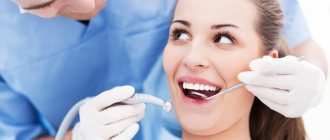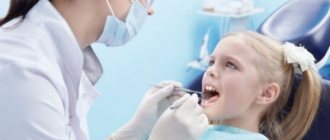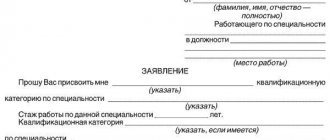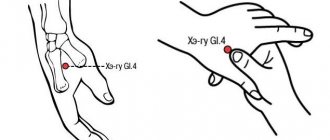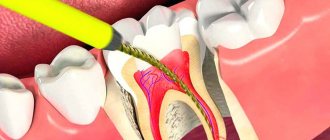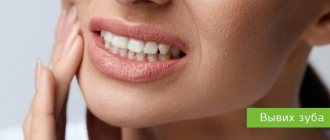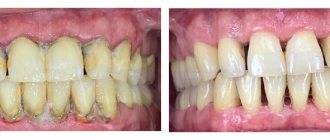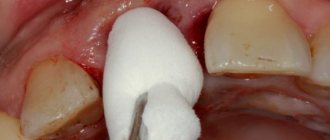In what cases is it impossible to go to dentistry?
The problem with visiting specialized medical institutions arises for people suffering from serious diseases of the musculoskeletal system. Bedridden patients and disabled people of group 1 are not able to visit the dental office for obvious reasons.
To seek help at home, you need to have good reason, or better yet, documented evidence. That is, you should prepare in advance documents confirming group 1 disability or a certificate from the attending physician about the patient’s condition.
Dental care at home, including services for preferential dentures, for disabled people with severe disabilities is provided by dentists, dental therapists, and orthopedic dentists in the scope of the list of services approved by orders of the Moscow Department of Health dated July 7, 2009 No. 783 " On improving the provision of dental care to disabled people with severe disabilities”, dated 08.08.2017 No. 558 “On approval of the Price Guide for orthopedic dental services provided by medical organizations subordinate to the Moscow Department of Health to certain categories of citizens at the expense of the Moscow city budget.”
Consultations are provided at home, caries and pulpitis are treated with the subsequent placement of a filling, measures are taken to relieve acute pain during exacerbation of periodontitis, pathological periodontal pockets are treated, dental plaque is removed, repair services and production of certain types of removable dentures are provided. Performing surgical procedures in the context of providing dental care at home is not provided for by regulatory documents.
Home calls are serviced at addresses included in the service area of the institution.
The patient must have a conclusion from a local physician regarding the possibility of performing dental treatment at home, issued by the medical organization at the patient’s place of residence.
Calling a specialist doctor to your home is carried out by telephone at the institution’s reception desk.
Reception of calls and visits by medical workers at the patient’s home is provided during the opening hours of the institution from Monday to Friday.
The organization of medical care at home in a planned form is carried out in accordance with the priority established on the basis of entering data into the “Book of recording doctors' calls to the house”, but does not exceed 10 calendar days. The patient is informed about the date and time of the visit to the specialist doctor.
House calls due to emergencies are processed on the day of receipt as quickly as possible.
A repeat appointment is scheduled by a medical specialist; the time and date of the appointment is agreed upon with the patient.
If it is impossible to provide dental care at home, the patient is given a referral for hospitalization in a hospital according to the established procedure, or if a condition is detected in the patient that requires urgent or emergency medical care, the performer of the home visit organizes a call to the SSiNMP team named after. A.S. Puchkova.
Dental treatment at home (in hospital)
In connection with the current sanitary and epidemiological situation in city dental clinics to provide emergency dental medical care at home to certain categories of citizens (persons sick with coronavirus infection COVID-19, or contacts of a patient with COVID-19, who are in isolation upon return due to border, patients who have had pneumonia, within 14 days from the moment of discharge from the hospital), mobile dental teams (hereinafter referred to as VSB), including children's, were created, consisting of a dental therapist, a dental surgeon and a nurse. VSB are located on the basis of the State Budgetary Healthcare Institution “Maxillofacial Hospital for War Veterans of the Department of Health”.
Teams are on call 24 hours a day
by phone: 8-499-842-41-12.
Departure of teams from 08:00 to 20:00 from Monday to Sunday.
The task of the teams is to treat acute toothache and other emergency and urgent dental conditions associated with acute toothache, dental injuries, application and removal of previously applied sutures, tooth extraction, and primary treatment of stomatitis.
The teams are equipped with portable dental equipment, personal protective equipment, medical equipment, and ambulance vehicles. The team's visit is free of charge for patients as part of the compulsory health insurance program. The patient must present a compulsory health insurance policy and an identification document (passport, birth certificate).
Types of interventions provided by mobile teams: opening of the tooth cavity with medicinal treatment; extirpation, removal of tooth pulp decay; application of devitalizing paste; applying a temporary filling; removal of fillings, crown trephination; opening of periodontal abscess; removal of a permanent tooth, simple and complex, including using a drill; opening of a soft tissue abscess in the oral cavity; opening of the subperiosteal abscess (washing, drainage); treatment of alveolitis with socket curettage; excision of the hood; applying and removing sutures; mechanical and drug stoppage of bleeding; anesthesia; reduction of dislocation of the temporomandibular joint; treatment of acute forms of stomatitis.
Where to go to call a dentist
It all depends on your financial capabilities. We can safely assume that a doctor from a paid dentistry will have better equipment and the service itself will be at the proper level. But families with disabilities rarely have the funds for expensive treatment, so their direct route is to free city dentistry. An important point: it is better if you decide in advance what to do with the diseased tooth: remove or treat. It is clear that sometimes it is difficult to decide, so if you are not sure, call for treatment. Well, if there are no other options, then you will need a surgeon. All this must be brought to the attention of the receptionist when you place the call.
Free dental clinics have a schedule of home visits. So if you say you need treatment, you may be scheduled for a day next week. Another thing is that if you receive a call for acute pain, the doctor will arrive on the same day.
Indications for removal
Of course, to remove a tooth at home or in dentistry, you need good reasons. It is more than unreasonable to pull out a unit of dentition that can be preserved without causing harm to health. This allows you to avoid a lot of problems and hassles in the future, eliminates the need to install a denture, etc.
In this regard, you should know the main indications for which doctors remove teeth in principle. Of these, the most common are:
- severe forms of carious lesions, when caries has destroyed most of the tooth and filling cannot help;
- other causes of extensive destruction of the crown or root part of the tooth;
- inflammation of the internal tissues of the tooth and their damage by pathogenic bacteria, called pulpitis;
- periodontitis, accompanied by severe pain, which cannot be eliminated by conservative treatment;
- pathological location or shape of teeth, accompanied by injury to the soft tissues of the oral cavity;
- supernumerary teeth that have no place in the dentition, growing in the palate or on the outside of the jaw;
- An urgent need for tooth extraction at home or in a clinic also arises with fistulas and various forms of suppuration.
In each of these cases, especially if there is acute pain, a person may require urgent removal of one or even several units of the dentition.
The nuances of calling a dentist to a disabled person’s home
Prepare for possible difficulties. Put yourself in the position of a doctor - it is very difficult to work in conditions where the patient is not in the dental chair, and with a portable instrument. In addition, in such conditions it is impossible to take an x-ray of the diseased tooth and you will have to treat or remove it, as they say, at random.
Therefore, prepare for the dentist’s arrival. Look for additional lamps and arrange good lighting in the room, prepare a chair for the doctor, and, just in case, a bowl and a towel. Check with the reception desk in advance to see if you may need to buy painkillers and a syringe of the appropriate size for anesthesia. Understand that it is difficult to expect perfect results under these conditions, so be patient and polite. The doctor will appreciate all this, and it will be easier for him to work in a friendly environment.
Have you had any experience of calling a dentist to your home? If yes, write about it in the comments, our readers will be very grateful to you!
Benefits of the service
As you understand, the ability to remove a tooth at home is a service that has many advantages. Among them the main ones are:
- if it involves removing teeth at home for disabled people, this deprives the patient of the difficulties associated with covering the distance from his place of residence to the dental clinic;
- eliminates the need to transport a seriously ill person, wasting a lot of effort on this and jeopardizing his health;
- Dental treatment at home allows you to minimize stress, because in familiar conditions a person always feels confident and protected.
At the same time, you don’t even have to worry about the result, because modern dental practices and new equipment allow you to provide the widest possible range of services outside the dental clinic. Thus, it is possible to carry out not only removal, but also full treatment or even prosthetics at home without compromising quality.
Anesthesia
Special attention should be paid to painkillers.
- Lidocaine
III generation anesthetic. Replaced the previously used novocaine, which is 4 times weaker in its effect on the body. Injections with adrenaline in its composition are made when it is necessary to stop the vasodilating effect of lidocaine.
- Articaine hydrochloride
It is used in both local and general anesthesia. Can be prescribed to the elderly, children and even pregnant and nursing mothers.
- Ubestezin
The action is similar to articaine. With the letter “D” this drug does not contain adrenaline. This drug is used if the patient has a history of bronchial asthma, thyroid pathologies, diabetes, hypertension and heart failure.
- Pyromecaine
The drug is strong but short-acting, 10-12 times stronger than novocaine. It is used as an application, applied to the sore surface of the oral mucosa. The depth of anesthesia is about 5 mm, the effect of the drug lasts no more than 1 minute
- Bupivacaine
Long-lasting anesthetic, up to 12 hours. 5-6 times stronger than novocaine. Designed for long-term, up to 3 hours, dental operations. Suitable for use in patients with cardiovascular problems.
What examination can a dentist perform at home?
To make the correct diagnosis, the doctor at our clinic organizes a preliminary examination of the patient at home; the doctor conducts a preliminary diagnosis of the patient. He conducts:
- Thorough examination of the patient;
- Temperature diagnostics;
- Palpation of the face, neck, oral cavity;
- Palpation examination of teeth.
The patient is examined in a sitting and horizontal position. This makes it possible to establish characteristic changes in the area of the facial jaw and identify disturbances in the color of the skin. Palpation of the maxillofacial area is carried out with both hands, left and right. The doctor determines symptoms such as pastiness, density, length of the infiltrate, connection with adjacent tissues.
Next, the dentist refers the patient to undergo examination in a clinical setting. He appoints:
- X-ray of a specific tooth or jaw;
- Biopsy, microscopy;
- Cytological and bacteriological studies;
- Chewable samples;
- Rheodentographic diagnostics.
All results are deciphered and explained in the presence of the patient.
The list of diagnostic methods depends on the severity of the disease and the characteristics of the patient’s condition.
Equipment for a doctor to visit your home
Naturally, the doctor will not deliver a specialized dental chair to the patient’s apartment; its weight and dimensions will not allow it. But a lightweight, easy-to-transport medical spotlight on a flexible rod for effective illumination of the surgical field will be available. Materials and devices for filling will also take up some space in the portable medical case.
It is possible to install and use at home such a safe and progressive composite material as silicon dioxide with the addition of glass ceramics and barium glass. That is, what is commonly called a “light seal”.
After cleaning the surgical field, the composite material is applied to the surface damaged as a result of chipping or caries, and then it is exposed to the light of an LED ultraviolet portable laser, the light from which activates the beginning of polymerization of the filling material, it quickly hardens. Since it is possible to select an array of fillings to match the natural color and tone of the patient’s teeth, such fillings are practically invisible, and this is important, especially for the front teeth.
However, it is possible to install traditional chemical seals, especially in hard-to-reach places.
The on-site kit also necessarily includes all kinds of forceps for tooth extraction (and there are several types of them, separate for incisors, canines and molars), elevators, carpule syringes and needles, chisels, osteotomes, curettes, probes, bone cutters, tweezers, retractors and mouth dilators. Naturally, there is no need to carry the entire dentist’s kit; for complex cases, the patient will still be sent for inpatient examination and treatment, but for emergency and simple cases, the visiting team will handle the patient’s home on their own.
